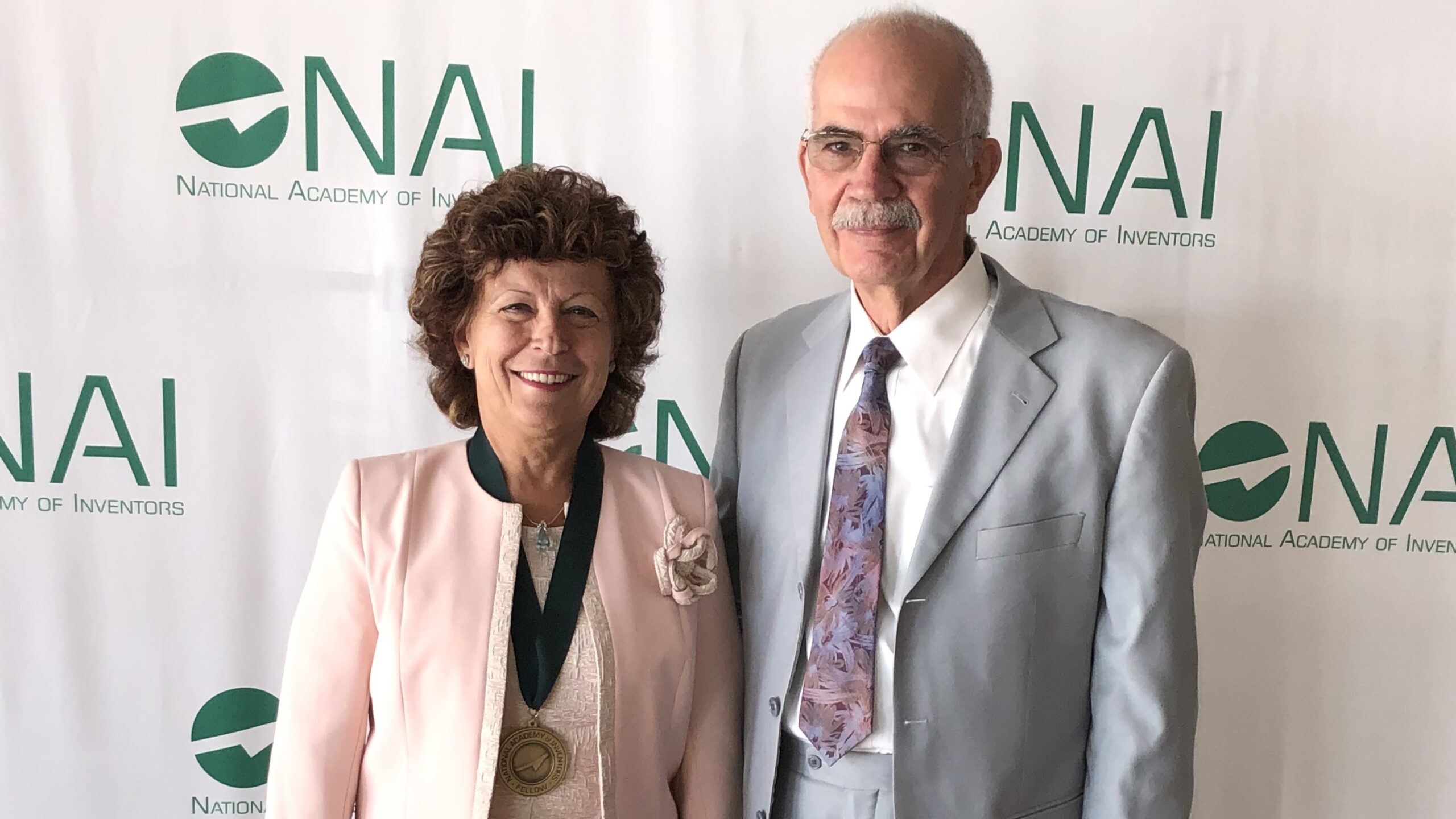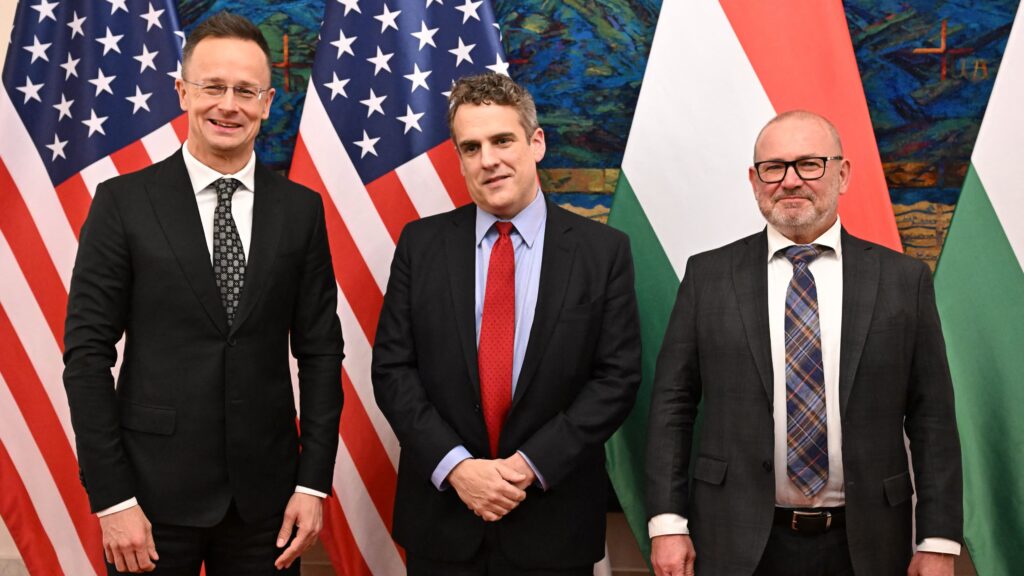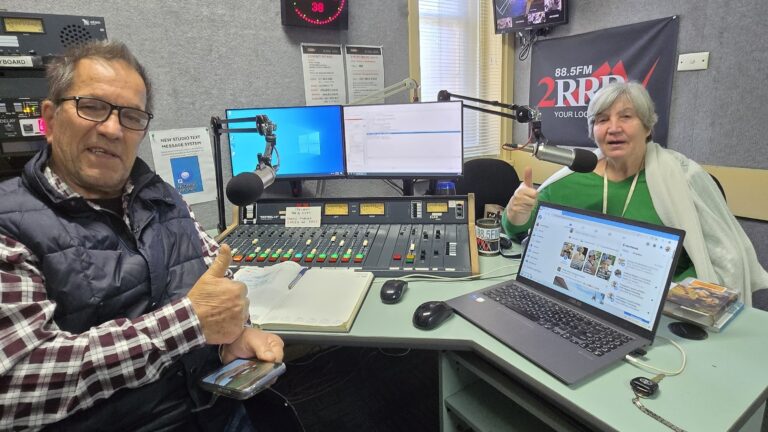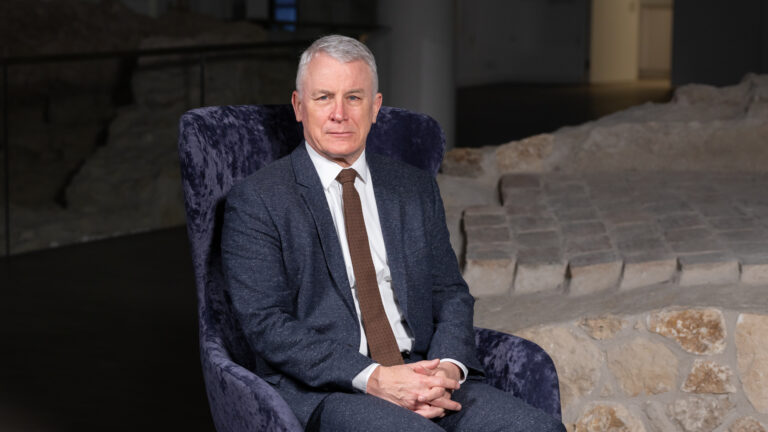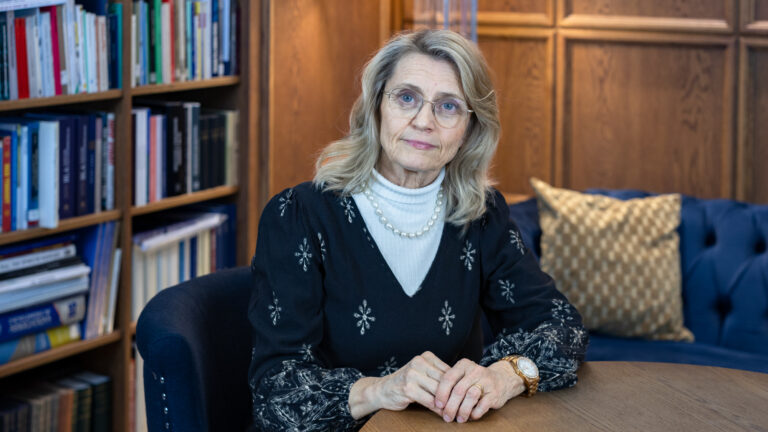Judit Puskás came to America initially with her husband and later with her family, with whom they had to move to Canada. She has a long, successful professional career as an engineer-researcher. One of her inventions is a special rubber that is widely used in cardiac surgeries. She was the first female recipient of the Charles Goodyear Gold Medal of the American Chemical Society and the only current Hungarian member of the American National Academy of Engineering. We talked about her professional challenges being a European and a female engineer, as well as about her family and her volunteer work for Hungarian communities.
***
How and when did you come to America for the first time?
My husband was working at the Central Chemical Research Institute of the Hungarian Academy of Sciences in Budapest and received a scholarship for a year and a half to the University of Akron in 1980. I’m a chemical engineer and I took unpaid leave to accompany him to the U.S. The university was in a completely run-down neighbourhood, and we had to rent a house where drug addicts used to live. I didn’t like to spend my days there, so I went to the lab where my husband worked. There was another Hungarian engineer at the university, József Berti, who would have employed me, but when my husband’s boss, Professor Joseph P. Kennedy—originally called József Kaufmann, who fled Hungary in ’49 and he recently died at the age of 96—found out about this, and asked me to work for him instead. Gábor and I were very successful researchers, writing six scientific articles during this period. After returning home, Professor Kennedy invited my husband back in ’84 and then the whole family in ’86. Meanwhile, in ’85, I got a PhD from the Faculty of Materials and Rubber Technology of the Budapest University of Technology (BME) in Organic and Biochemical Engineering. While in the United States again, in ’88, a professor from then-communist Hungary tried to entice us to engage in industrial espionage. The communist secret service was aware of a NASA project underway at the university, and they wanted to use us to explore what it was about. We were offered to be paid for our services.
What was your reaction and what were the consequences?
I told my husband, ‘I can’t lie. We’re going to get caught the first day.’ When we refused to cooperate with the communist authorities, Gábor was ordered home immediately. We decided not to go back. Professor Kennedy suggested that we stay in America as illegal immigrants and he would pay us under the table, but our lawyer advised us to move to a third country instead. Gábor found a corporate job in Canada, which he would only accept if they could take me as well. It was no small thing to impose such conditions, but we couldn’t have done it any other way.
What were your first experiences in Canada like? Was it better there than in the U.S.?
Many people say that Canada is like America. It’s not true, especially Ontario province, which could be described as an English colony at that time. My first experience was discriminative treatment. We became second-class people. We had all different nationalities working at our workplace, but the company would only hire its managers from the UK. I was also not accepted because I was a woman. When asked in a workplace survey, I replied that I was satisfied with my job, but not with my salary, because I was earning half as much as men. Consequently, I was blacklisted, and they planned to fire me. Luckily, in the meantime our employer had been bought by Bayer, the German chemical conglomerate, so we started working for the Germans, who fired all the British managers. But some colleagues still didn’t like the fact that I was a female engineer, so they kept trying to hamper whatever I was planning to achieve. Ultimately, I decided to go back to a university as a professor. As I read several articles about the lack of female engineers in Canada, I wrote to all 40 Canadian universities. All of them refused to hire me. I then turned to my boss, telling him that I would do research for them at the university, if they continue covering my salary, which the Canadian government would double. Much to my surprise, they agreed, so I could start working as a researcher at the University of Western Ontario.
What specifically did you research?
I’ve always been into rubber as a material. When we lived in Akron, we were asked for help by one of Professor Kennedy’s students: he had been trying for a long time to produce a certain kind of rubber, but he hadn’t succeeded. We looked into it and helped him prepare the rubber he was asked for. Later, when we lived in Canada, I attended a conference in Florida in ’90 and delivered a lecture mentioning this story. A bioengineer heard it and approached me afterwards wondering if this rubber type would be just right for him for the purposes of cardiac surgeries. At that time, he was working on coronary stents inserted through the blood vessels and inflated to dilate the coronary arteries. This method is now used 90 per cent of the time instead of open-heart surgeries. It was approved by the Food and Drug Administration (FDA) only in 2004. We found out about it because the university received royalties for the patent, since I previously insisted on patenting it. The professor didn’t want me to file the patent, but I had the right to do so, and I wrote the application myself. When he had to sign it, he got so angry that he wouldn’t even get in the same elevator with us afterwards. Half of the five million dollars royalty went to the university, including the professor, but we also got enough money to be able to pay off the mortgage on our house.
Why did you return to the U.S.?
Bayer would sometimes provide guidance about what to research at the university, but I was also doing my own research, in addition to teaching. I started working on biological matters, for instance using enzymes for rubber. My biggest area of research became breast prostheses because of the huge problems with silicone rubber. People don’t know that 30 per cent of implant surgeries lead to health problems. Unfortunately, the risks are not sufficiently publicized, because it’s a huge business. One friend had nine operations because of it. When I started getting into this area, my research was going very well.
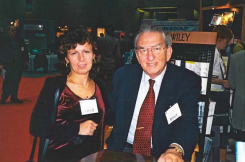
I was recommended to go back to the University of Akron, which was the center of polymer research. I liked the idea, so first discussed this with my employer, because I was receiving half my salary from the Canadian government, which would have been lost if I had gone back to the U.S. Since my German boss was previously a PhD student at the same university, to my surprise he approved my request! Moreover, I was paid by the company for five more years, so I didn’t cost the University of Akron a penny. Such good people have accompanied me on my professional journey, some of them are true friends…
How did your move back to the U.S. turn out professionally?
Gábor initially stayed in Canada. For two years, we drove four hours each way, one weekend he visited me, and then the next weekend I visited him. When a friend arranged for him to be hired by Goodyear in Akron, he moved back permanently. In the first five years I did very well professionally, but once it was on the university to pay me, they started picking on me… There are typically two reasons a tenured professor can be fired from a university: for corruption or because of a sex scandal. An auditor came to look at my university finances and claimed that the money I’d previously been receiving from my employer had gone into the ‘wrong account’ for five years! At first, I didn’t even understand what was happening. The university director, who set up the account for me, said he knew nothing about it. Luckily for me, my secretary found the first check with his name on it as the beneficiary… which I gave to the auditor so that I was exonerated.
So, you had enemies, too… Were there other incidents like that?
Unfortunately, yes, but thanks to God, I came out of those well, too. The president of the university had me write a $20 million project proposal with the promise that I would be the technical leader of the project. After we submitted it, I found out from the radio that the university had won the project, which would be announced by the governor of Ohio. I wasn’t invited and they even deleted my name from the project documentation. I immediately went to see the university president to complain, and his lawyer explained to him that this could get him in big trouble because of Title IX, which is a federal legislation prohibiting sex-based discrimination in schools and educational projects that receive funding from the federal government. I didn’t want to leave my job, because we’d moved so much and Gábor had a very good job at Goodyear. So, I accepted their compromise offer of being transferred from the College of Polymer Science and Engineering to the College of Engineering. As part of the deal, they gave me a new lab worth a million dollars.
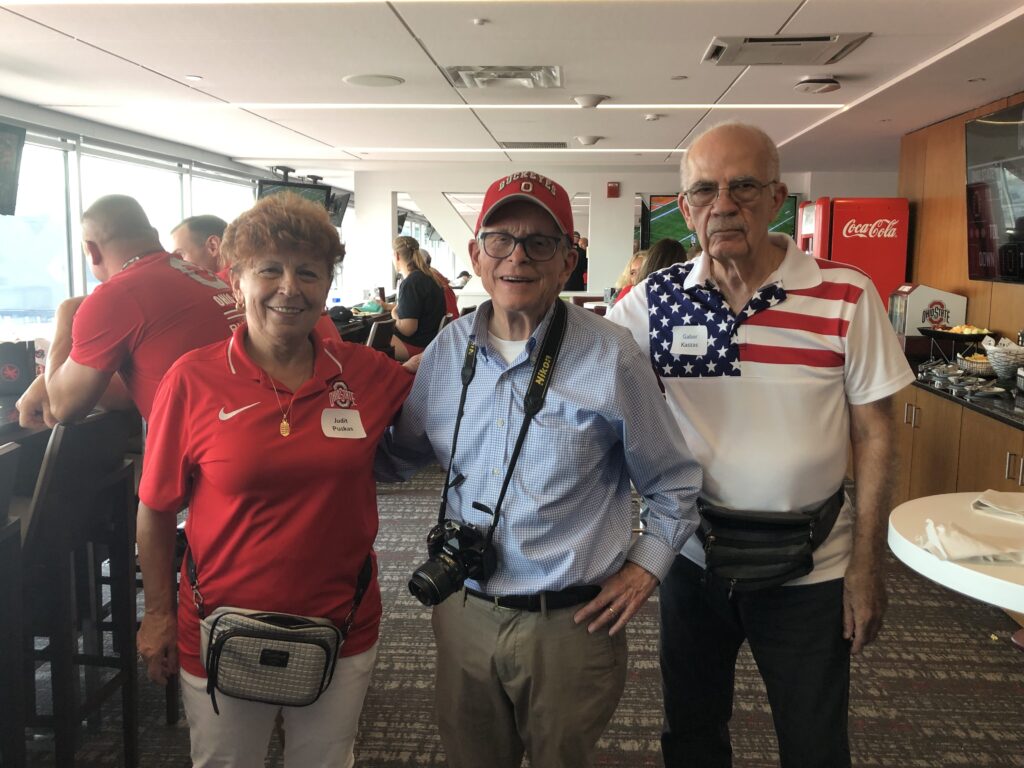
Where did this adventure take you professionally?
Unfortunately, not in the best direction, but God or my angels saved me from a scandal again. It turned out that the university had spent too much money on real estate instead of funding research that it defaulted on its loans, so during the Covid pandemic 60 tenured professors were fired with the excuse of the ‘health emergency’. I’d have been one of them if I hadn’t previously listened to a friend from Ohio State University. Katrina Cornish drew my attention to a project she thought was just right for me. At the age of 65, instead of retiring, I submitted the project application and won! I was given $750,000 in seed money, which I could spend before the Covid hit us.
God is really looking out for you, but you have had to have a lot of strength, too…
I learned to never give up. There’s a reason why I’m known in professional circles as the Iron Lady. One of the professors, who also didn’t like me, called me fearless. Since I’ve nothing to hide, I’m indeed not afraid of anyone. By the way, Katrina said that I should submit an application because she had been trying to introduce natural rubber plants in the United States for a long time, but unsuccessfully. She pointed out to me that the federal government grants money to so-called Engineering Research Centers. We started to develop the proposal, contacted universities and submitted the first version. They were interested, so we had to submit the second version of our plan. It turned out, however, that another group of (male) engineers also wanted to submit a similar proposal. The university concentrated on them and, of course, they succeeded. Since a university can have a maximum of two such centers, our chances of winning the second submission were minimal, so we were suggested to forget about it. But I didn’t want to forget about it at all! We revised and resubmitted the second proposal in 2022. I’ve just received the news that it was successful: we won the right to create the center and 26 million dollars with it. Now my university is the only one in the USA to have two such centers!
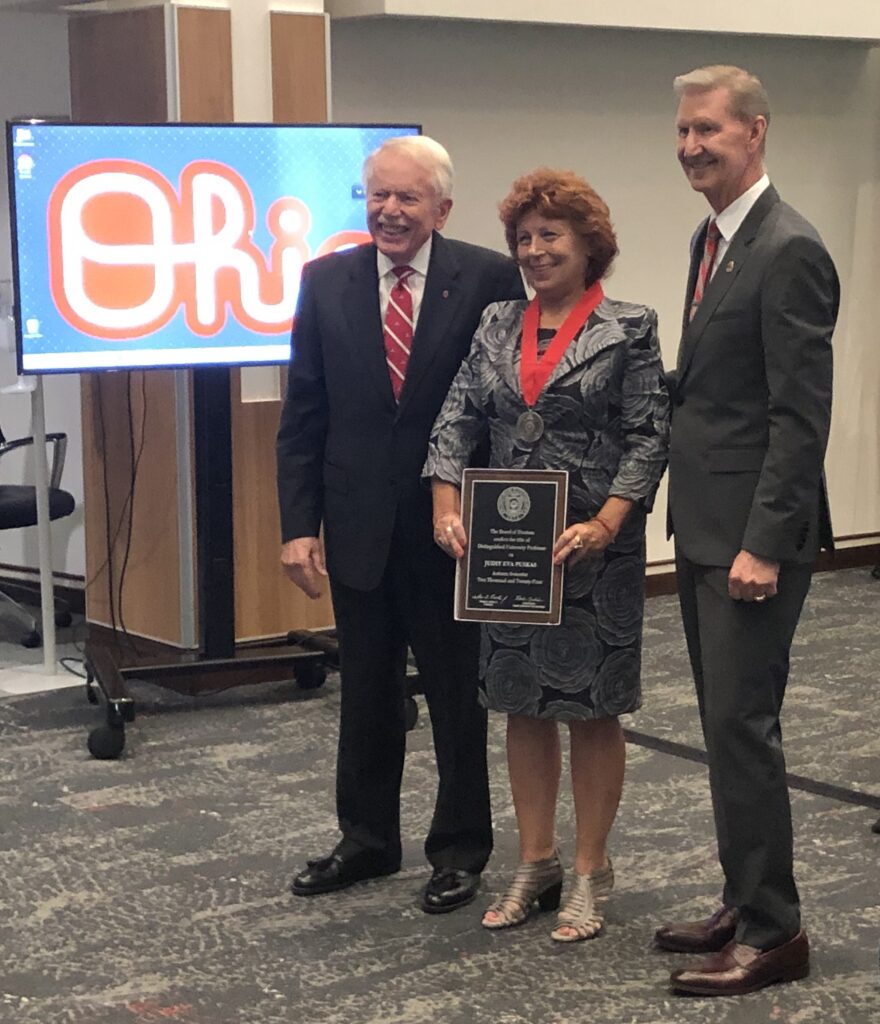
What will you do with 26 million dollars? How long will the project take?
It’s already been divided among the seven universities involved in the project: my university (Ohio State), Caltech University, North Carolina State University, University of California Merced, Texas Tech University, Case Western Reverse University in Cleveland and Rensselaer Polytechnic in New York. Each of these is doing something different: some are involved in plant biology, some in genetic engineering. This is a five-year project, but it can be extended for another five years. I’ve always wanted to find someone to take over my lab. I finally have one and he is Hungarian! After five years, I’ll hand it over to him.
How did you find him?
I’ve always enjoyed working with European universities. A good Polish friend introduced us to Péter Polyák, former professor at the Budapest University of Technology, a 35-year-old genius. He came to work for me this way. On his last day of work after a three-month scholarship with us, I got a long email from him explaining that he loved working here and wanted me to get him a job as a technician, because he wanted to stay. I wrote him back: ‘Do you want to take over my lab?’ He said yes. Since the previously mentioned project application was successful, he’ll become a professor and get a million dollars for research.
He must be very grateful to you… Let’s now turn to your professional awards.
The Rubber Division of the American Chemical Society is a very old organization, founded in the 1930s, awarding a Charles Goodyear Gold Medal every year since 1942. In 2017, I became the first female recipient of this distinction 75 years after they started to award it. My friend Catrina was the second in 2024. The American Academy of Sciences was founded in 1863, and in the ’60s was split into three distinct organizations, separating engineers, scientists and medical doctors. One of my university colleagues nominated me for admission to the American National Academy of Engineering, but he also told me to not have high hopes because I was a European and female. Yet I was admitted, as the only Hungarian, I assume because of my patent. Not necessarily the first Hungarian, since Andrew S. Grove (the founder of Intel) could have also been a member previously. My background, however, was not enough for membership at the Hungarian Academy of Sciences (MTA in Hungarian), to which I was also put forward for admission, but I was voted down, because another applicant had higher support. In Hungary, it used to only matter how many articles you write. Now they are beginning to realize that it isn’t what should matter, but what you put on the table holistically. Professional jealousy has accompanied me throughout my career; the more successful I became, the more I was detested. It didn’t feel good, and it didn’t ease my life, but it never discouraged me from continuing to work as a European female engineer researcher.
What about your family?
When we came to America with them in ’86, our girls didn’t know any English, but they learned quickly in kindergarten. Anikó, then four and a half years old, was fluent after six months; it took a little longer for Ildikó, then two and a half years old. When we moved to Canada, they were seven and five years old respectively. We enrolled them in a French school, so now they are fluent in three languages. Of course, they also went to weekend Hungarian schools. They now live in Toronto. Ildikó first wanted to be a journalist but retrained as a midwife. Half of her clients are Hungarians, so she uses the language actively, but unfortunately her two children don’t speak it because their father isn’t Hungarian, and Ildikó didn’t speak Hungarian with them, although she now realizes that it was a mistake. We keep in touch with the grandchildren, we also visited Hungary several times together. Anikó works as an actress with her second-generation Hungarian husband Ádám and she’s also a personal trainer. They have no children.
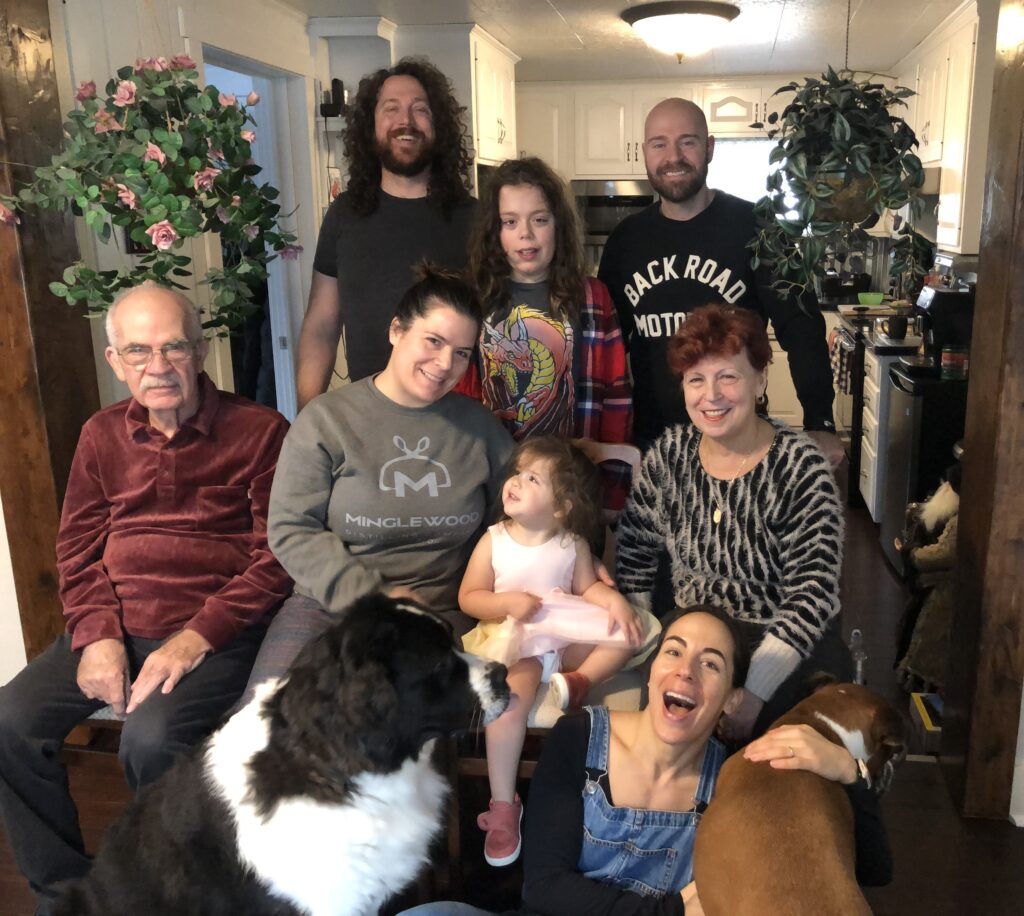
Tell us also about the Hungarian communities you served in.
I’ve always been a proud Hungarian. I immediately reached out to Hungarians and got involved in the local Hungarian communities wherever we moved. In Canada we lived in Sarnia, which had about 200 Hungarians and many more in the area at that time. For a while, I was even president of the Hungarian Club there, with about 50 people regularly attending. There were quite a few Hungarians also in Akron, we regularly attended the Hungarian Club there. There was also a nursing home named after Zsuzsanna Lorántffy, founded by a Hungarian reverend called Dömötör, Hungarians who lived there have died out by now and the owner is no longer Hungarian. We also keep in touch with Hungarians in Cleveland. We regularly attend the Hungarian Congress; I received the gold Árpád medal from the related Árpád Academy. I gave some lectures at the Hungarian Museum, for example on Albert Szent-Györgyi. I helped at the Hungarian School Camp organized by the Hungarian Scout Association in Exteris (KMCSSZ in Hungarian), at Eszti Pigniczki’s request. The Bőjtös family invited us to the ITT-OTT Conferences and I’ve been on its board for a while to help organize it.
Since we’re now at the ITT-OTT Conference, how do you see its future?
I see a strong generational divide. Our age group and others who grew up in Hungary know lots of Hungarian folk songs by heart, for example. Among the second or third generations, perhaps only the scouts know some. This year, quite a few young people have come and some of them have given very good lectures, but unfortunately, they haven’t really attended the lectures of others and performances. I know everybody says the same thing about the next generation, but the current one is really messed up! Smartphones are ruining them. I heard a lecture recently: those who can handwrite still have active brains, shown by MRI scans, but those who can only type, have little brain activity detected. When we came to the US, everybody had to go to high school, but nowadays a lot of students drop out, because they can’t make it. In Hungary, one can choose between high school and vocational school after eighth grade, but they’ve just started to introduce this system in the U.S. Those who came to the Conferences this year are bright and well-informed, but unfortunately not interested in, for example, pure literature and folk culture (especially if performed by older people), which have been the essence of these conferences for 50 years. Last year we talked about closing it down, but fortunately now it looks as if there may be hope for continuing with it. But what it’s going to be like, I don’t know…

